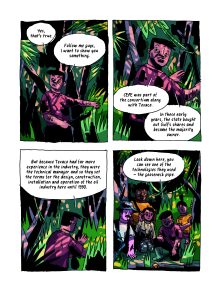13 Activity 3.3 Comparing Memory Practices
Elizabeth Kryder-Reid

Associated Readings:
Selected readings from Section 3 of Toxic Heritage
Targeted Skills:
Comparative analysis, written communication
Directions:
A common issue in toxic heritage is that its harms are invisible. The heavy chemicals in deposits from gold mining, dry cleaning, and chemical warfare are visible only at the molecular level. Furthermore, contaminated deposits are typically submerged in pond bottoms and groundwater plumes or buried in subsurface deposits. Also often invisible are the people who have been affected by contamination –the workers exposed to toxic fumes, fluids, and dust; the German prisoners of war and foreign “guest workers” in 1920s France who disassembled chemical weapons by hand; the working-class communities living with the debilitating effects of chemical waste and industrial byproducts. A third aspect of absence is that much of the discourse about environmental degradation is removed from its historical context. Environmental harms are typically framed in the presentist discourses of science, policy, and economics – they are disconnected from the longstanding historical and cultural systems and structures that created and perpetuate them. Finally, absence includes the lack of recognition of the slow violence of spreading contamination, multi-generational impacts, and epigenetic harms. For example, the contamination from WWI artillery from hot spots like Place à Gaz, as well as the millions of shells buried across northern France and southern Belgium are now, more than 100 years after the end of the war, contaminating groundwater and creating public health problems.
- Select 3 of the contributions in section 3. For each one, record what particular memory practices the community engages in (ex. memorials, curating collections, story telling, etc.). In some cases, the authors are the ones mobilizing heritage practices, such as in Dr. Fiske’s ethnographic research translated into graphic art in Visual Essay 2.
- Write a short essay comparing the memory practices in the studies you selected? What do they have in common? How are they different? Are some more effective than others at accomplishing their respective goals and, if so, why?

